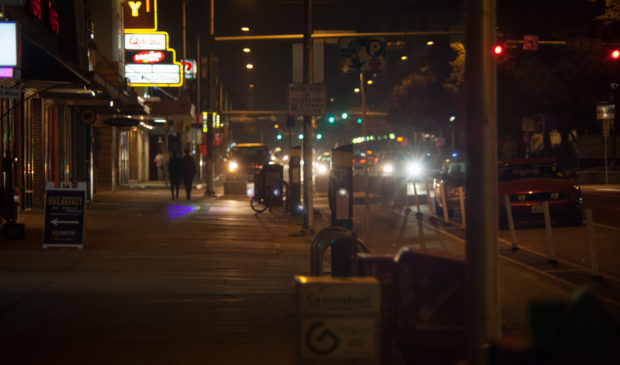West Campus overlay grows without Planning Commission expansion
Monday, November 18, 2019 by
Ryan Thornton The 2004 University Neighborhood Overlay district has made West Campus a strong contender for the most urban neighborhood in the city. City Council passed an amendment to the district Thursday that will help generate even more growth, but some of the residents who live there say it doesn’t go far enough.
Rylan Maksoud, West Campus resident and student at the University of Texas, said the density of the Inner West Campus Subdistrict, where building heights are generally up to 175 feet and as high as 220 feet, has been good for residents, but surrounding areas need more density to drive down rents.
In August, the Planning Commission approved a set of amendments that would have done just that, modestly expanding the boundaries of both the Inner West Campus Subdistrict and the less dense Outer West Campus Subdistrict in order to get more height and more affordable units in the neighborhood.
Community groups have been working on a similar, though less ambitious, effort for about a year. A group of neighborhood associations under the umbrella of the Central Austin Neighborhood Planning Advisory Committee came up with its own set of amendments to get more housing in West Campus. However, Allie Runas, chair of the West Campus Neighborhood Association, said her association of residents was “ignored and condescended” to at the group’s meetings.
Charlie Henry, who helped found the West Campus group, said CANPAC is an “exclusive club” made of member associations that intentionally drew lines around the University Overlay District to keep themselves out, but failed to include West Campus residents in their planning efforts.
To get around the problem, Runas said the WCNA took its issues to the Planning Commission, where its vision for the neighborhood was heard and incorporated into the commission’s set of recommendations.
Those recommendations are mostly in line with those created by CANPAC and proposed by staff, except for the expansions of the subdistricts. Of particular concern from the neighborhood groups was the expansion of the Outer West Campus Subdistrict into “buffer zones” that act as transition zones into the less dense neighborhoods to the north, west and south.
By passing these recommendations, Mary Ingle, former president of the Austin Neighborhoods Council, said the Planning Commission “violated process” and slid the provisions in behind the other stakeholders’ backs.
Council Member Leslie Pool also opposed the Planning Commission’s vote, which she said was “done by fiat” in order to keep out the very people tasked with shepherding the evolution of the overlay district.
On the other hand, West Campus residents and representatives from student political organizations showed up in unanimous support of Planning Commission recommendations. Josiah Stevenson, speaking on behalf of a West Campus property owner, said the commission’s actions were the result of West Campus residents finally having their voices “heard in a meaningful way.”
Nonetheless, Council did not support the Planning Commission’s recommendations. Council Member Kathie Tovo motioned approval of the staff recommendation instead, which passed 7-2-1 with Council members Paige Ellis and Pio Renteria opposed, Natasha Harper-Madison abstaining and Greg Casar off the dais.
The amendments as passed will not expand any subdistrict but will allow an additional 125 feet of height in Inner West Campus and an extra 25 feet in Outer West Campus if developers agree to preserve at least 20 percent of units as income-restricted and either pay a one-time fee or dedicate another 10 percent of units as 50 percent median family income.
The amendment will also eliminate all parking minimums in the district with the exception of accessible parking, which will be regulated in the same way as the Central Business District. With no parking requirements, the amendment also allows for conversion of non-accessible parking spaces into housing or a limited variety of other uses.
Finally, the amendment will allow signs in the neighborhood to be up to 150 square feet and to be installed without being engraved or inlaid into buildings as required today for signs above the second floor.
Photo by Cherry Bream made available through a Creative Commons license.
The Austin Monitor’s work is made possible by donations from the community. Though our reporting covers donors from time to time, we are careful to keep business and editorial efforts separate while maintaining transparency. A complete list of donors is available here, and our code of ethics is explained here.
You're a community leader
And we’re honored you look to us for serious, in-depth news. You know a strong community needs local and dedicated watchdog reporting. We’re here for you and that won’t change. Now will you take the powerful next step and support our nonprofit news organization?






